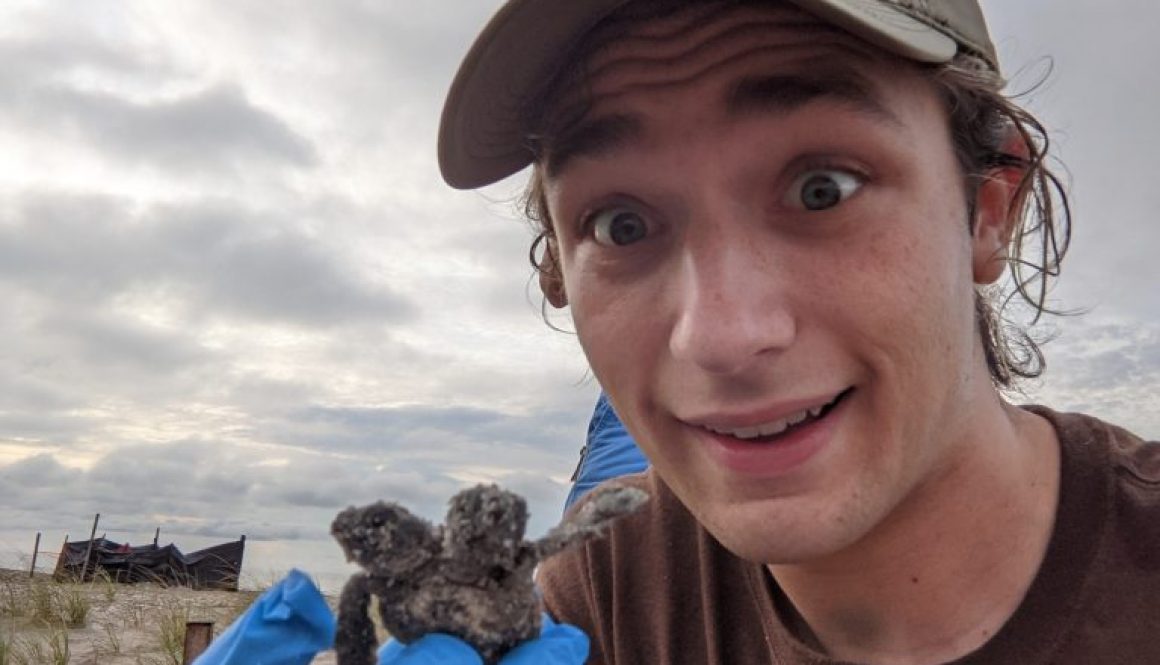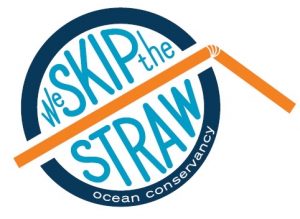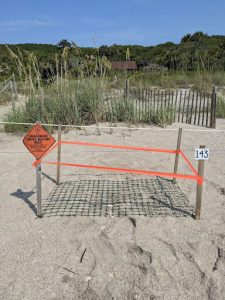Sea Turtles and You: How You Can Help Our Shelled Friends!
Author: Chase Austin
Hi everyone, Chase here! I know we’re all looking forward to the end of the semester: no classes, beautiful weather, not being in class, the great outdoors, and not going to classes.
For me, though, the one thing I look forward to most each summer is Sea Turtle Season!
The South Carolina State Reptile is the beautiful Loggerhead Sea Turtle, a threatened keystone species that I had the wonderful privilege of working with last summer on Edisto Beach. It involved long, hot days, very early mornings, and super late nights, but with the guidance of Sea Turtle Specialist Lea Schwartzentruber, I learned many ways that we non-Specialists can help.
As Sea Turtle Nesting Season approaches (it officially runs from May 1-October 31), I want to share some nifty tips and tricks so you can be the most sustainable sea turtle friend you can be! I’ve split it into two categories: things you can do at home, and things you can do at the beach!
At Home:
At home, the best thing you can do to help sea turtles out is to reduce your single-use plastic waste. That means staying away from more than just straws: use less plastic wrap, utensils, bags, bottles, and more. Sea turtles have evolved to have great eyesight, but unfortunately, they haven’t evolved to tell the difference between a plastic bag and a jellyfish in the deep dark depths of the ocean. The SC Aquarium here in Charleston is finding more and more sea turtles with plastic in their bellies – you can help prevent that!
Campaign from the Ocean Conservancy to help reduce plastic waste!
For those of you who love seafood, as I know many people do here in the Lowcountry, one of the other great ways you can help sea turtles is to be conscious of where your seafood comes from. Here in the US, it is illegal to catch sea turtles and trawler nets are required to use Turtle Excluder Devices, but there are many places where that is not the case. Therefore, buying your seafood as locally as possible is a great way to protect sea turtles AND uplift your local community! It’s a two-for-one!
At the Beach:
When you’re at the beach, like I know you will be, there are a few things to keep in mind to help reduce your impact on nesting sea turtles.
For starters, make sure you always follow my favorite nature rule: “Leave it better than you found it.” That means ALWAYS taking everything that you brought with you onto the beach back when you’re done for the day, filling in whatever holes you may have dug, and kicking down your sandcastles. That’s right, unfortunately even the sandcastles must go. You can also help by picking up any trash you find while you’re out, even if it isn’t yours!
You can also make a big impact by doing one of the simplest and calmest things imaginable – turn out your lights at night! Remember when I said sea turtles evolved to have great eyesight? Yeah, that only applies when they’re underwater. Have you ever opened your eyes underwater? You can’t see much, can you? That’s how they feel. Sea turtles follow the reflection of the moon on the waves at night to find their way back out to sea, and our flashlights, house lights, camping lanterns, etc. are all brighter than the moon, so keep them off! It’s nicer that way, anyway – it makes the stars easier to see.
My other tip is something of a caveat to the last one: red lights are a lot less visible for sea turtles, so those are okay to use! You can get a red flashlight at a lot of hardware stores because they’re very popular for fishing and camping. Their popularity mostly has little to do with sea turtles – turns out, red light is good at making sure your eyes retain their night vision. So, if you need to see specific stuff at night, a red light is the way to go.
If you see a sea turtle or sea turtle hatchlings, the best thing to do is to do literally nothing. Stay still, turn your lights off, and just stay back and out of their way. Nesting sea turtles can be easily spooked, so if you see a mama turtle come ashore, do your best to be unnoticeable. Give her 10 feet to do her business and leave. Please, no pictures! Just enjoy the moment. Turtle teams are led by trained specialists under strict permits from the Department of Natural Resources, so they know what to do and how to do it safely without disturbing the wildlife. Unless you are a Sea Turtle Specialist (Hi, Leah!), please keep your distance from ALL sea turtles and remember it is very illegal to touch, catch, or take sea turtles.
I assume it doesn’t have to be said but please don’t disturb the nests! That is also a highly illegal activity, and it will make the turtle teams very angry, and they’re normally very lovely people.
I promised I would keep the article relatively short, but I just love turtles too much for that. I hope you keep these tips in mind this summer as you bump into sea turtle territory on beaches all across the coast, and help play your part at home too every time you think of those adorable little ones, running their way to the sea.
About the author:
Chase is the Student Engagement Intern, Environmental Geoscientist, Alliance for Planet Earth Co-President, and turtle nerd. He has a huge interest in protecting threatened ecosystems and keystone species, as well as photography, cooking, and more!


